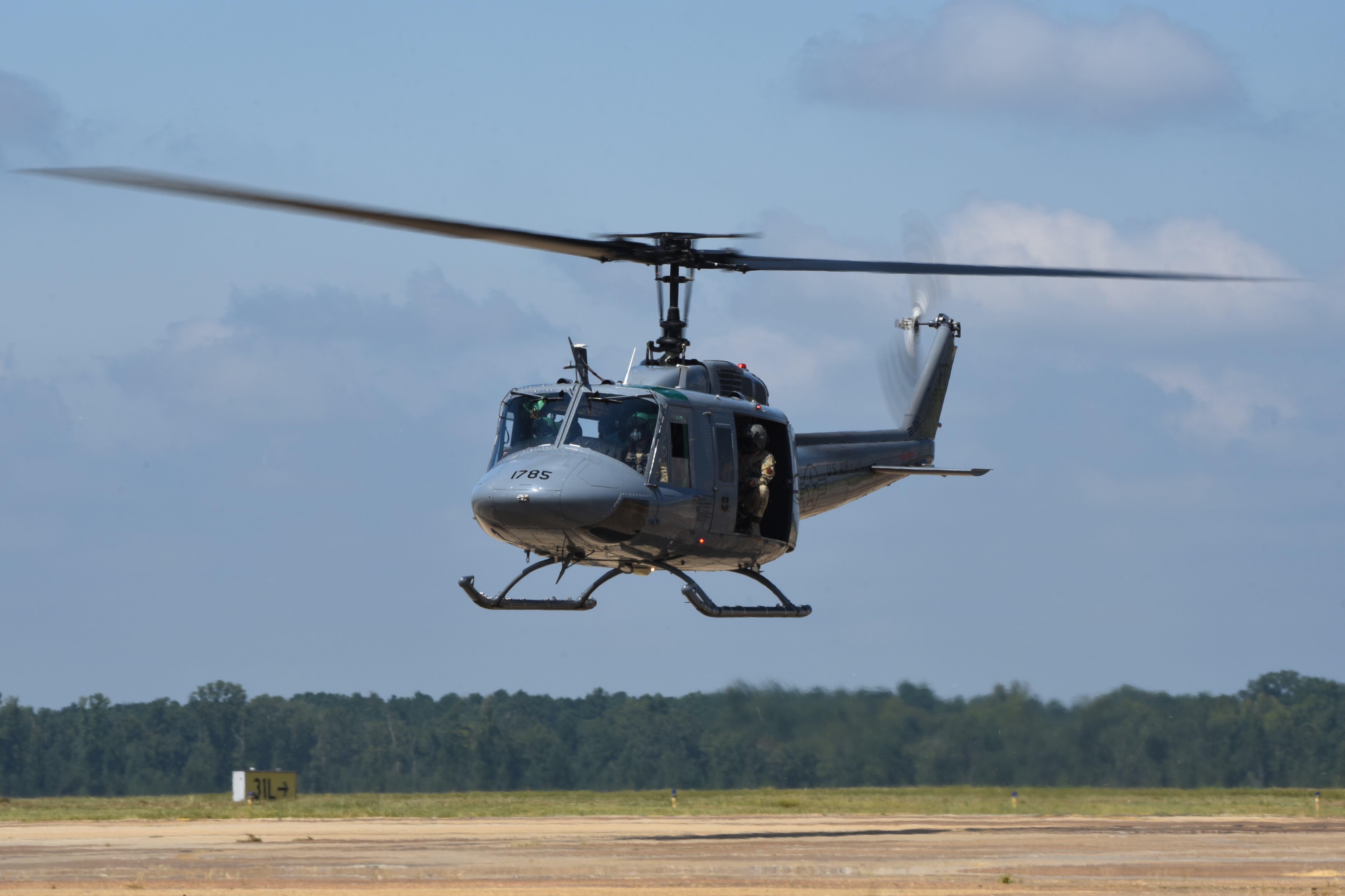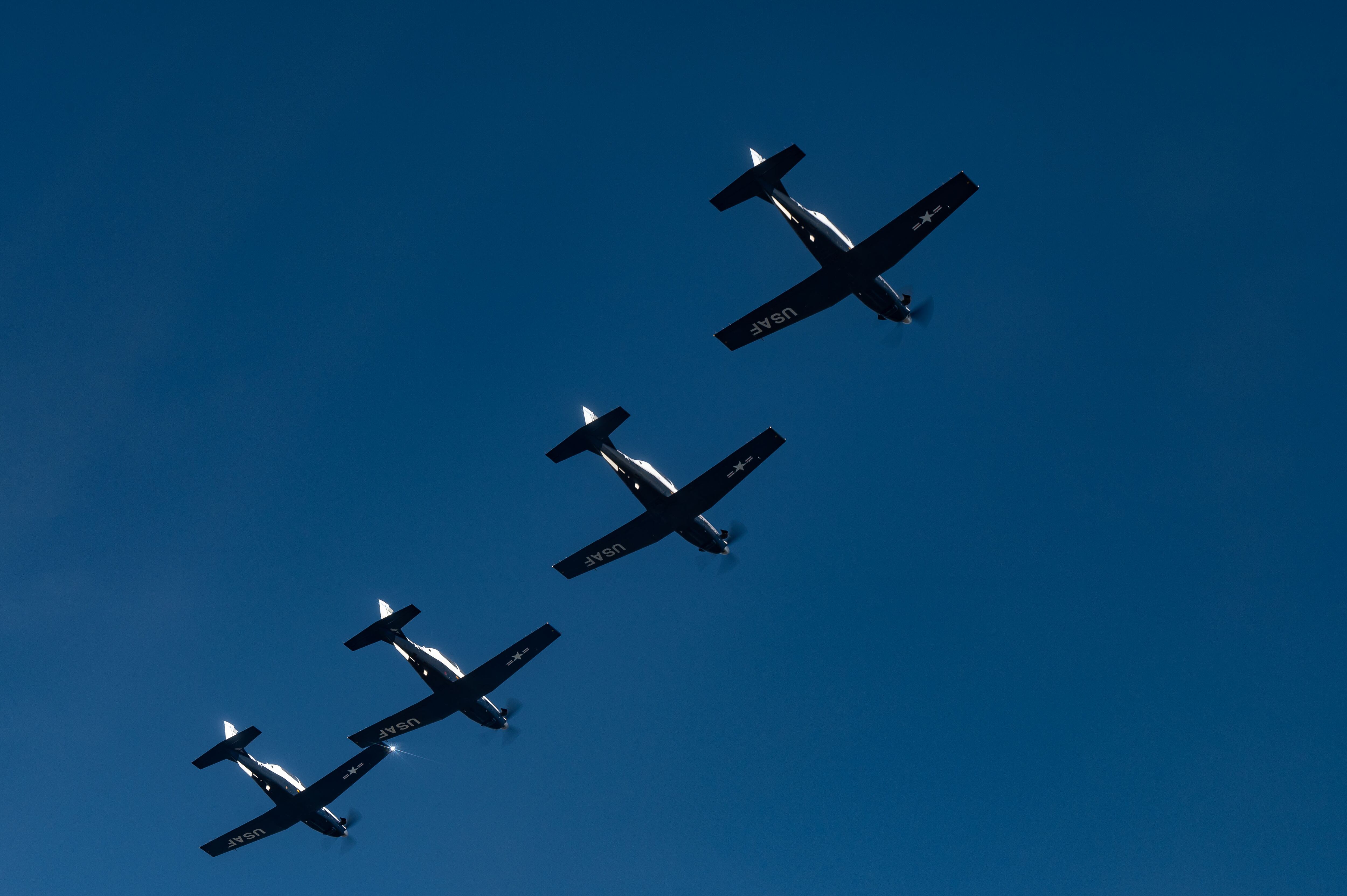The Air Force will fall short of its fiscal 2023 pilot training goal by about 120 airmen, missing its annual target of around 1,500 new aviators for the eighth consecutive year, the service confirmed Sept. 8.
A slew of maintenance woes, staffing issues and other unexpected setbacks led the Air Force to pin wings on around 1,350 airmen rather than its aspirational goal of 1,470. The shortfall makes it more difficult for the service to fill a pilot shortage of around 2,000 people that has persisted for years.
“We’re going to try to make sure we are still flying because that’s what we do as an Air Force,” Maj. Gen. Clark Quinn, the two-star general in charge of pilot training told reporters on a recent conference call.
The Air Force set a new target of around 1,500 new aviators a year in fiscal 2020 but has so far failed to meet its own bar. It will aim for that same goal in fiscal 2024, Air Force spokesperson Benjamin Faske said.
About half of unfilled pilot billets belong to the active duty Air Force, and most fall within the fighter community. To avoid shortchanging the operational squadrons that fly missions around the world each day, the Air Force instead leaves staff jobs empty that pilots would typically fill.
“It sounds like it’s not as big of a deal to short the staff,” Quinn said. “That actually does affect long-term mentoring and growth of the officers that we expect to be able to lead our Air Force in the future.”
It also puts more pressure on the service to retain experienced pilots. More than 650 airmen, or 67% of eligible people, have accepted bonus pay under a legacy program aimed at keeping aviators in uniform, the Air Force said Aug. 30.
At least 210 more airmen have signed contracts worth up to $50,000 a year as part of a new, congressionally mandated pilot retention program that opened this summer.
Slower-than-expected repairs to the engines used on the T-38 Talon jets have limited the number of aircraft that can be used for daily training missions for more than a year. T-38s are the Air Force’s sole intermediate platform for teaching airmen to fly fighter and bomber aircraft.
“It has not gotten worse, but it has also not gotten better,” Quinn said. “The government is looking at perhaps doing some in-house … parts production to try and help facilitate getting them back healthy.”

In July, a thunderstorm further set back undergraduate pilot training when it damaged nearly 20 T-6 Texan II turboprop aircraft at Vance Air Force Base, Oklahoma.
“Those spare parts are not sitting on a shelf where you can pull them out and fix it the next day,” Quinn said.
The service is also still struggling to fill its civilian instructor jobs, 30-40% of which sit open. Quinn said the Air Force is testing the possibility of hiring remote teachers to control a simulator or run a class from afar. Slow internet connections could limit how widely that option may be used, he added.
Those problems have made it difficult for the Air Force to fully reap the benefits of years of changes to its undergraduate pilot training, shrinking it to a seven-month process that allows airmen to move at their own pace using virtual reality and other educational technology.
The service had hoped the overhaul would eventually allow it to graduate more pilots who are better equipped to juggle the conflicting demands of modern combat.
As years of UPT refinements come to a close, other updates are still getting off the ground. A streamlined version of fighter pilot training, which combines introductory and graduate-level practice in the T-38 Talon jet, is underway at Columbus Air Force Base, Mississippi, Quinn said.
“They’re executing that right now,” Quinn said. “It is ... maybe 15% to 20% of the way through the syllabus, so far too early to take any grand conclusions from it. But having notionally talked to some of the pilots, they’re already seeing where there’s going to be opportunities to make the entire pipeline more efficient.”
The Air Force is leaning into its plan to train new mobility pilots using simulators instead of the T-1 Jayhawk jet, which will gradually retire through fiscal 2026.
“Again, it’s a little bit too soon to make grand assessments, but at this point, the folks that have graduated from that … program are doing just fine at the formal training units,” Quinn said. “We’ve noticed no significant trends or dropoff in their performance.”
Lawmakers have requested more insight into that process as part of the fiscal 2024 defense policy bill, and proposed to block the service from retiring any T-1s until more questions on the plan’s impact on pilot production are answered.
A revamped version of helicopter training has ended the practice of first teaching airmen to fly the T-6 Texan II turboprop plane, and instead begins with rotary-wing training from the outset. After an introductory course, airmen head to undergraduate helicopter training at the Army’s Fort Novosel.
Defense company CAE announced in June it would run the Introductory Flight Training-Rotary course over the next 10 years under a contract worth up to $111 million. The class will move to the company’s facility near Fort Novosel in Dothan, Alabama. Quinn indicated that transition will be complete in the fall.

The various slowdowns have also created a bottleneck in the training pipeline itself, as hundreds of airmen wait for spots at those flight schools to open up.
More than 900 people were waiting to begin pilot training at the end of August, Faske said. The pool of pilot hopefuls typically spikes in the late spring and early summer as candidates graduate from college, then wanes as they enter the schoolhouses throughout the year.
But the downturn in aircraft availability means those students filter through the system more slowly, keeping them out of the cockpit for months.
Half of that pool must wait three to nine months to begin undergraduate pilot training, Faske said. Another quarter waits for less than three months, and the remaining quarter is in limbo for more than nine months.
In the meantime, airmen get their initial flight training classes and survival courses out of the way, start postdoctoral studies, or are slotted into office jobs where they can use their college degrees.
“You’ve completed your training. We had a commitment to you, we’re going to make you a lieutenant, and we will put you to work,” Quinn said.
Rachel Cohen is the editor of Air Force Times. She joined the publication as its senior reporter in March 2021. Her work has appeared in the Washington Post, the Frederick News-Post (Md.), Air and Space Forces Magazine, Inside Defense, Inside Health Policy and elsewhere.




